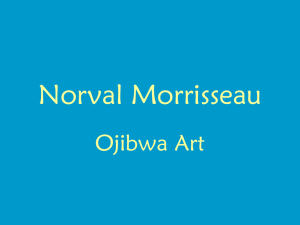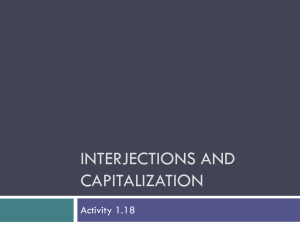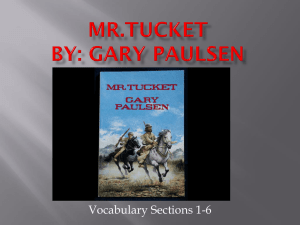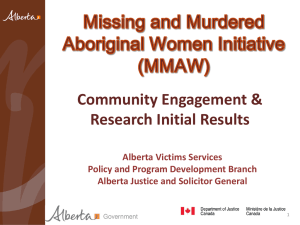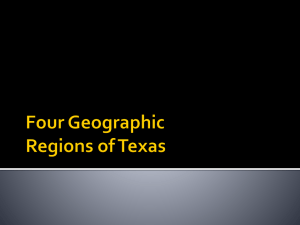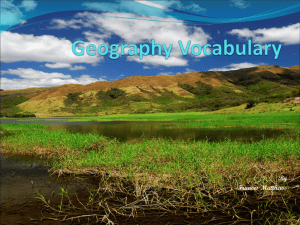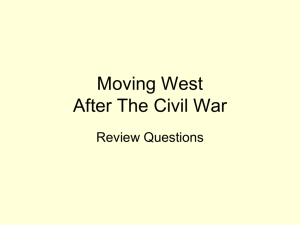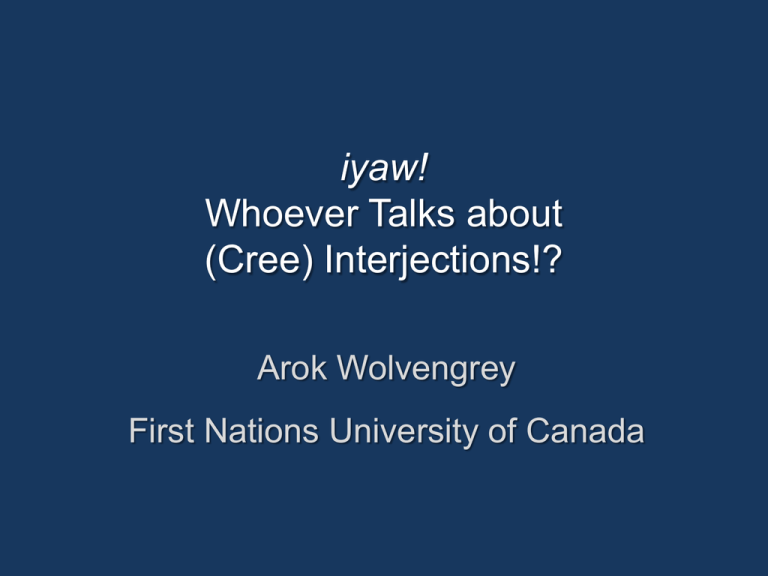
iyaw!
Whoever Talks about
(Cree) Interjections!?
Arok Wolvengrey
First Nations University of Canada
Plains Cree Interjections
1.
Interjections
1.1 - 1.8 Definitions
2.
Expressives - no addressee
2.1 Classification of Plains Cree Expressives
2.2 Observations
3.
Interactives - addressee-oriented
3.1 Classification of Plains Cree Interactives
3.2 Plains Cree Vocatives
3.3 Observations
4.
Conclusions
Plains Cree Interjections
1. Interjections: Definitions
1.1 Webster’s New World Dictionary
College Edition (1953, p 762)
• an interjecting
• something interjected; exclamation
• in grammar, an exclamation thrown in without grammatical connection
(e.g. ah! lo! pshaw! good-by!)
Second College Edition (1976, p 735)
• the act of interjecting
• something interjected, as a word or phrase
• Gram. an exclamation thrown in without grammatical connection (Ex.
ah! ouch! well!)
Plains Cree Interjections
1. Interjections: Definitions
1.2 Oxford Dictionaries (Online):
http://oxforddictionaries.com/definition/english/interjection
- [accessed 12/10/2013]
• an abrupt remark, especially as an aside or interruption: barracking and
interjections from the protesters
• an exclamation, especially as a part of speech (e.g. ah!, dear me!).
1.3 Oxford Advanced Learner’s Dictionary:
http://oald8.oxfordlearnersdictionaries.com/dictionary/interjection
- [accessed 12/10/2013]
• a short sound, word or phrase spoken suddenly to express an emotion.
Oh!, Look out! and Ow! are interjections.
Plains Cree Interjections
1. Interjections: Definitions
1.4 Free Online Dictionary: http://www.thefreedictionary.com/interjection
- [accessed 12/10/2013]
•
“A sudden, short utterance; an ejaculation.”
•
“The part of speech that usually expresses emotion and is capable of
standing alone.”
•
“Any of the words belonging to this part of speech, such as Ugh! or Wow!
•
(Linguistics / Grammar) a word or remark expressing emotion;
exclamation
•
(Linguistics / Grammar) a word or phrase that is characteristically used in
syntactic isolation and that usually expresses sudden emotion;
expletive [cf. The Collins Dictionary]
Plains Cree Interjections
1. Interjections: Definitions
1.5 Wikipedia: http://en.wikipedia.org/wiki/Interjection
- [accessed 12/10/2013]
• “In grammar, an interjection or exclamation may be a word used to
express an emotion or sentiment on the part of the speaker (although
most interjections have clear definitions). Filled pauses such
as uh, er, um are also considered interjections. Interjections are often
placed at the beginning of a sentence.”
• “An interjection is sometimes expressed as a single word or nonsentence phrase, followed by a punctuation mark.”
• “Interjection as a figure of speech refers to the use of one word.”
Plains Cree Interjections
1. Interjections: Definitions
1.6 Introductory Linguistics Texts: (0/19)
Plains Cree Interjections
1. Interjections: Definitions
1.7 Bloomfield (1933): Language (republished 1984)
• Under the heading minor sentences:
“Interjections are either special words such as ouch, oh, sh [...] or else
phrases (secondary interjections), often of peculiar construction, such as
dear me, goodness me, [...], please, thank you, good-bye.” (p 176)
“... as answers to questions; for this we have the special completive
interjections, yes and no. (p 176-177)
“A substantive form naming a hearer .... [Such] interjections sir and ma’am
are especially devoted to this use[; ....] Many languages have special vocative
forms for this use.” (p 177)
• “The lexical form appears ... in certain positions of certain
constructions or, if it is an interjection, in few or none; ... (p 265)
Plains Cree Interjections
1. Interjections: Definitions
1.7 Bloomfield (1933): Language (reprinted 1984)
• “the interjections pst! and sh! with which we demand silence ...” (p 121)
• “... certain special speech forms, interjections, such as oh! ah! ouch!
These forms all reflect a violent stimulus, but differ in connotation from an
ordinary statement in which the speaker merely says that he is undergoing
a strong stimulus. (p 156)
• In a discussion of substitution types and gestures:
“Especially the substitutes of the ‘this’ and ‘that’ types resemble
interjections in their semantic closeness to non-linguistic forms of
response; like interjections, they occasionally deviate from the phonetic
pattern of their language. (p 250)
Plains Cree Interjections
1. Interjections: Definitions
1.8 Hengeveld and Mackenzie (2008) Functional Discourse Grammar
• situate interjections as holophrastic utterances at the pragmatic or
Interpersonal Level of the Grammar.
• divide Interjections into Expressives and Interactives (p 76)
• Expressives “are ways for Speakers to give vent to their reactions to
elements of the ongoing communicative situation. One could easily
imagine them being produced in solitude, as when one hits one’s thumb
with a hammer.” (p 76)
• Interactives “differ from Expressives in being clearly directed to the
Addressee.” (p 77)
• “Vocatives constitute a special class of Interactives, ...” (p 76)
Plains Cree Expressives
2. Expressives:
• “The meaning of Expressives tend to recur across different languages.
Thus we very regularly find expressions for Ekman et al.’s (1972) six basic
emotions anger (damn), disgust (yuck), fear (help), joy (wow), sadness
(aw) and surprise (well, well).” (p 76)
• It could be possible to expand on this list, such as with Ekman’s (1999)
own expansion in which he adds the further emotions of: amusement,
contempt, contentment, embarrassment, excitement, guilt, pride in
achievement, relief, satisfaction, sensory pleasure, and shame.
• For this initial study, I will include only the original six basic emotions plus
the expression of pain, which Hengeveld and Mackenzie (2008) (and
Bloomfield (1933)) explicitly include as well.
Plains Cree Expressives
2.1 Plains Cree Expressives:
•
pain
āwiya
~ āwiyā
‘ouch, ow’
[cf. Woods Cree: ayayā]
takay
•
‘dammit!’ ; “prick!”
anger
āh
‘aagh!’
mā
‘surely not; come on’ [also: surprise (disbelief)]
stā
‘dammit!; geez, not again’ [cf. wācistakāc]
takay
‘dammit!; prick!’ [cf. -takay- NDI ‘penis’]
wīnt
‘dirty …’ [cf. wīnitakay ‘dirty prick’; wīnicisk ‘dirty ass’]
Plains Cree Expressives
2.2 Plains Cree Expressives:
•
disgust
āw
‘ah! och! oh!’ [low intonation, dismissive or
expressing disagreement]
cah
‘geez, ridiculous, absurd; nonsense; be serious’
[exclamation of disgust; also: cāh, cēh, cwā; see nc]
iyaw
‘oh for goodness sakes’ [low intonation; also surprise]
mā
‘surely not; come on’ [disbelief]
nānapāwisk
‘oh sure, now he gets here; too late’ [also: nānapāwis]
nc
‘geez, ridiculous, absurd; nonsense; be serious’
[exclamation of disgust; also: inc; see cah]
nitakisa
‘yeah, right!; not by any chance’ [also: nitaki, nitakis]
Plains Cree Expressives
2.1 Plains Cree Expressives:
•
joy
hah
‘ha’ [also: ha; can also express schadenfreude: ‘so, serves
him/her right’]
haha
num-num
tāpwē kihci
wahwā
yahē
yahow
•
‘ha, haha’ [also: ha, hah]
‘mmmm’ [pleasurable sensation from taste]
‘truly great!’
‘oh my!’ [surprise, positive or negative]
‘yesss!’
‘yahoo!’
sadness
āmī
‘oh my, oh dear’ [expression of sympathy, sorrow]
wiyakāc
‘that’s too bad, sorry to hear that’ [expression of sympathy,
sorrow]
Plains Cree Expressives
2.1 Plains Cree Expressives:
•
surprise
ayiwāk
aýiwāk ihkin
‘what more?’ [cf. IPC ayiwāk ‘more’]
‘goodness gracious, too much’ [cf. aýiwāk ‘more’
+ VII ihkin ‘it exists’; literally “more exists(?)”]
ānakacā
‘oh my God! holy cow! cool!’ [also: ānakacay, nakacā]
iyaw
‘well, well now, for goodness sakes; oops’ [also: yaw]
īh
‘my goodness, good heavens, oh no!’ [also: ī]
kakwāhýahkamik ‘goodness gracious; how startling!’
māmaskāc
‘amazing, wondrous, strange, unbelievable’
ōh
‘oh!’ [possible English influence]
wah
‘oh; well’ [also: wa, wā, wāh]
wahwā
‘oh my! wow! good gracious’
Plains Cree Expressives
2.1 Plains Cree Expressives:
•
surprise
continued
wahwāhay
wācistakāc
wāhay
‘oh my! wow! good gracious; oh my goodness, oh for
pete’s sake, geez!’ [cf. wāhay]
‘oh my, goodness gracious, incredible! beyond
reason!’ [also: wācistak, wācistikā, wācistakāt]
‘oh my goodness, oh for pete’s sake, geez!’
[cf. wahwāhay]
•
fear
ēyahē
īh
īhay
īhī
‘oh no!’
‘ahh!’
‘oh no!’
‘enemy in sight!’
Plains Cree Expressives
2.2 Expressives: Observations
•
Overlap between the categories (sometimes intonationally distinguished):
•
pain and anger
(e.g. takay!)
•
anger and disgust
(e.g. mā!)
•
disgust and surprise
(e.g. iyaw!)
•
surprise and joy
(e.g. wahwā!)
•
surprise and fear
(e.g. īh!)
•
Not necessarily restricted to lacking an addressee:
•
anger
(e.g. wīnt! - and many other terms can be used
vocatively to let an addressee know what you really think!)
•
disgust (e.g. cah!, etc. - in response to someone’s statement, etc.)
•
surprise (e.g. iyaw!, etc. - in response to someone’s statement, etc.)
•
pain!
(e.g. āwiya! - as a warning to a child)
Plains Cree Expressives
2.2 Expressives: Observations
•
the Expressive Frame in Functional Discourse Grammar representation:
(A1: [(F1: Intj (F1)) (P1)S] (A1)
A
= Discourse Act
- not to be equated with clause or sentence, but will nevertheless result in a
meaningful and complete utterance (cf. Bloomfield’s “minor sentence”)
F
= Illocution variable of the Discourse Act,
- in the case, the Illocution is not abstract but instead filled by
Intj = the lexical Interjection, constituting the holophrastic message
PS = the Speaker, as sole required participant
Note: There is no variable for the Addressee (PA)
Plains Cree Expressives
2.2 Expressives: Observations
•
a modified Expressive Frame for FDG:
(A1: [(F1: Intj (F1)) (P1)S {(P2)A}] (A1)
A
= Discourse Act
F
= Illocution
Intj = Interjection
PS = the Speaker
PA = the Addressee
Note: This adds an option to allow Expressives to overlap with the
function of Interactives, since many can be used to impart a message to an
addressee and are not restricted to Speaker-oriented use alone.
Plains Cree Interactives
3. Interactives:
• Interactives “differ from Expressives in being clearly directed to the
Addressee.” (Hengeveld and Mackenzie 2008:77)
• Interactives also allow for additional (presupposed) communicative
content to be added beyond the lexical interjection itself:
•
e.g. Congratulations! or Congratulations [on winning the Nobel]!
• The form of Interactives may be dependent on “contextual circumstances”:
•
•
e.g. Good Morning/Afternoon/Evening!
- time of day greetings
e.g. Obrigado / Obrigada!
- gender-based “thank you” in Portuguese; etc.
• Interactives form a very mixed bag, and we might expect considerable
language-specific variability. The following classification for Plains Cree
is undoubtedly not complete. It is based on the few examples suggested
by Hengeveld and Mackenzie (2008), as augmented by categories from
Dik’s (1997) earlier Functional Grammar discussion of Extra-Clausal
Constituents, and by the Cree data itself.
Plains Cree Interactives
3.1 Plains Cree Interactives:
•
Greetings (opening)
tānisi
‘hello; how are you?’ [lit: “how”]
tānisi ēkwa
‘hello, how are you now?’ [lit: “how now”]
tānisi kiya
‘hello, how are you?’ [lit: “how (are) you”]
tānisi ēkwa kiya ‘hello, how are you now?’ [lit: “how (are) now you”]
tānisi ātawiya
‘hello, how’s it going?’ [lit: “how although”]
tānisi ātawiya kiya ‘hello, how are you getting along?’
[lit: “how although you”]
tawāw
‘come in, welcome’ [lit: “there is room”]
Plains Cree Interactives
3.1 Plains Cree Interactives:
•
Greetings (response)
ēyiwēhk
‘so-so’
namōya nānitaw ‘I’m fine; no worries’ [literally: “not about”; also: mōya
nānitaw; mōy nānitaw, mōnānitaw]
takahki!
•
‘great!’
Parting
ēkosi
ēkosi māka
hāw
ka-wāpamitin
‘that’s it’ [literally: “so, thus”]
‘that’s it then, but so it is’ [literally: “so but”]
‘okay; let’s go’ [also: ahām, ahāw, hām]
‘(I will) see you’ [also: ka-wāpamitin ici ‘I’ll see you later’,
kīhtwām ka-wāpamitin ‘I’ll see you again’; ka-wāpamitin
pa-pimātisiyahko ‘I’ll see you again if we are living’]
mwēstas
‘later’
Plains Cree Interactives
3.1 Plains Cree Interactives:
•
•
Asking
āh
‘eh, what’s that?’
hā
‘eh, what’s that?’
kiya māka
‘and you?’
Thanking
hay-hay
‘thanks’ [also: ay-hay]
kinanāskomitin ‘thank you’ [literally: “I am grateful to you”]
kitatamihin
‘thank you’ [literally: “you make me smile”]
Plains Cree Interactives
3.1 Plains Cree Interactives:
•
•
Acknowledgement
ka
‘oh, I see’ [also: kah; kā]
hā
‘oh, I see’
Agreement
ēha
‘yes’ [also: āha, ēha’ ]
hāw
‘okay, all right; fine, agreed’ [also: ahā, ahāw, ahām,
āhāw, āw, hām]
mhm
‘ya’ [backchannel; used during another speaker’s narrative
as acknowledgement or agreement without interruption]
tak ōt āni
‘it is a good thing’ [from: tako oti ani]
Plains Cree Interactives
3.1 Plains Cree Interactives:
•
Disagreement
āh
‘ah! och! oh!’ [low intonation; dismissive or
disagreement; also: āw]
cah
‘geez, ridiculous, absurd; nonsense; be serious’
[exclamation of disgust; also: cāh, cēh, cwā, inc, nc]
mā
‘surely not; come on’ [disbelief]
mwāc
‘no; not; no way, by no means, not at all’ [also: mwāt,
namwāc, namwāt]
namōya
‘no; not’ [also: mōya]
nāh
‘not so’ [cf. expressive: mā]
nitakisa
‘yeah, right!; not by any chance’ [also: nitaki, nitakis]
Plains Cree Interactives
3.1 Plains Cree Interactives:
•
Directive
awas
‘go away; get out of my way’ [singular]
āstam
‘come here’ [singular]
ī
‘look, behold’ [also: īh]
kākito
‘be quiet, shut up’
kiyām
‘let it be; nevermind’
mah
‘hark!, listen’
na
‘here, take it’ [also: nah]
niyā
‘be off, get along; go ahead’ [singular]
tawāw
‘come in; welcome’
Plains Cree Interactives
3.1 Plains Cree Interactives:
•
•
Warning
awahē
‘be careful’ [singular]
pēyāhtak
‘be careful’ [also: pēyāhtik]
yākwā
‘look out!’
the Interpretive Frame in FDG representation:
(A1: [(F1: Intj (F1)) (P1)S (P2)A {(C1)Φ}] (A1)
•
This adds an obligatory addressee (PA), which incidentally might be
made explicit through the inclusion of second person pronouns as in
Greetings (e.g. tānisi kiya, tānisi ēkwa kiya, etc.) or Questions (e.g. kiya
māka), or Vocatives.
•
It can optionally also add some additional communicative content {(C1)Φ}.
Plains Cree Vocatives
3.2 Plains Cree Vocatives:
•
Elements within vocative expressions can occupy one of two places in the
FDG interactive frame:
(A1: [(F1: Intj (F1)) (P1)S (P2)A {(C1)Φ}] (A1)
•
Particles which serve as summonses or attention-getting devices (cf. Dik
1997:386; Wolvengrey 2011:350) can be added to the list of interactives
occupying the head (Intj) position in the interactive frame.
ay
‘hey’ [also: ēhēy, ēy, hēy]
āh
‘ah’ [neutral intonation, introductory; also: ā]
ēy
‘hey’ [also: ay, ēhēy, hēy]
hāw
‘well then’ [also: agreement, exhortation]
Plains Cree Vocatives
3.2 Plains Cree Vocatives:
•
In addition to and often in combination with the interactive particles, there
are specific vocative forms for indicating the addressee. In the singular,
these are primarily kinship terms which may or may not take a distinct
vocative form.
•
Vocatives are in considerable flux in (Plains) Cree with conservative
(sub)dialects retaining many irregular and distinct vocative patterns,
while many other areas, perhaps exhibiting language loss, have
simplified most vocatives and/or replaced them with the first person
singular possessive referential forms of bound kinship noun stems.
•
The following list of vocatives are arranged by the type of differences
exhibited from the regular referential form. Vocatives may be a) shortened
or clipped forms, (b) marked by a particular vocative singular affix, or (c)
a mixture of these and other patterns.
Plains Cree Vocatives
3.2 Plains Cree Vocatives:
•
Clipped Vocatives
1sPoss-Referential
Kinship Term
cāpān
nicāpān; nitāniskotāpān
great-grandparent
nōhkō
nōhkom
grandmother
nimosō
nimosōm
grandfather
nikā / nēkā
nikāwiy
mother
nōhtā
nōhtāwiy
father
niciwā
niciwām
brother; male parallelcousin [male speaker only]
nitawēmā
nitāwēmāw
sibling of opposite gender
nitān
nitānis
daughter
nitihkwā
nitihkwatim
nephew; son-in-law
Plains Cree Vocatives
3.2 Plains Cree Vocatives:
•
•
-ē Vocatives
1sPoss-Referential
Kinship Term
nisikosē
nisikos
mother-in-law; cross-aunt
nisisē
nisis
father-in-law; cross-uncle
nimisē
nimis
older sister
nistēsē
nistēs
older brother
nicāhkosē
nicāhkos
sister-in-law; female
cross-cousin [female only]
nisīmē
nisīm
younger sibling
1sPoss-Referential
Kinship Term
nikosē
nikosis
son
nōsisē
nōsisim
grandchild
nikwēmē
nikwēmēs
namesake; namer
Mixed Vocatives
Plains Cree Vocatives
3.2 Plains Cree Vocatives:
•
•
Like other interactives, plurality of an addressee can be indicated. Any
kinship term - and some additional nouns - can be marked to indicate
plural address by the vocative plural suffix -itik (cf. regular plural -ak).
Plural Kinship Voc
nōhkomitik
nimosōmitik
nimisitik
nistēsitik
nitānisitik
nikosisitik
niwāhkōmākanitik
•
Plural Nominal Voc
iskwētik
nāpētik
1sPoss-Referential
nōhkomak
nimosōmak
nimisak
nistēsak
nitānisak
nikosisak
niwāhkōmākanak
Kinship Term
grandmothers
grandfathers
older sisters
older brothers
daughters
sons
relatives
Referential
iskwēwak
nāpēwak
Gloss
ladies/women
gentlemen/men
Plains Cree Vocatives
3.2 Plains Cree Vocatives:
•
•
While the regular animate plural merely indicates number of the referent
(as provided at the semantic/representational level of FDG and
subsequently given morphosyntactic and phonological form through
encoding), the vocative plural -itik is a distinct morpheme triggered by a
plural feature of the Addressee (PA) at the pragmatic/interpersonal level of
FDG, or simply inserted as part of the lexical vocative/name.
The following examples, expressing both lexical interjectives and
vocatives, would thus have the accompanying FDG representations
below.
e.g.
āh, nikosē! ...
(A1: [(F1: āh (F1)) (P1)S (nikosē)A] (A1)
e.g.
hāw, nimosōmitik! ...
(A1: [(F1: hāw (F1)) (P1)S (nimosōmitik)A] (A1)
Plains Cree Interjections
4. Plains Cree Interjections: Conclusions
•
Most Interactives are invariant in form, though there are some that vary by
the number of the addressee.
Directives:
singular
plural
‘go away’
awas
awasitik
(-itik)
‘come here’
āstam
āstamik / āstamitik
(-(it)ik)
‘go on’
niyā
niyāk
(-k)
singular
plural
awahē
awahēk
Warnings:
‘be careful’
•
(plural suffix)
(plural suffix)
(-k)
The two plural patterns mirror the verbal Imperative (-k) and the Vocative
(-itik).
Plains Cree Interjections
4. Plains Cree Interjections: Conclusions
•
More complex verbal patterns might also be in evidence if certain formulas
of Parting and Thanking are fully included as Interactives.
Thanking:
1s>2s
1s>2p
‘thank you’
(“be grateful”)
kinanāskomitin
kinanāskomitināwāw
‘thank you’
(“make smile”)
kitatamihin
kitatamihināwāw
1s>2s
1s>2p
Parting:
‘see you later’
•
ka-wāpamitin ici ka-wāpamitināwāw ici
First person plural (1p) forms are also possible.
etc...
etc...
Plains Cree Interjections
4. Plains Cree Interjections: Conclusions
•
These may take the full range of inverse local set agreement and, as
they represent only the speech act participants (speaker and addressee),
such forms are directly linked to the interpersonal/pragmatic level of FDG.
•
Full verbal forms may originally be the communicated content, but over
time grammaticalize to become more and more invariable resulting in
interactive (and perhaps ultimately expressive?) interjections.
cf.
•
Productive VAI stem:
kito- ‘make a sound, speak up’
2s.Imp:
(ē)kā(wi)ya kito! ‘Don’t make a sound!’
Interactive Interjection:
kākito! ‘Shut up!’
Whereas kito- can be fully inflected, kākito(k) can only be in singular and
plural imperative-like forms as Interactive interjections.
Plains Cree Interjections
4. Plains Cree Interjections: Conclusions
•
Phonetic forms of Cree Interactives (and Expressives) usually keep to the
minimal word requirements of the language, but do occasionally break the
phonetic rules:
• /h/-initial words only occur as interjections (e.g. hā, hāw, hay-hay, etc.)
• Single-syllable words are very rare, but proportionately more occur as
interjections (e.g. āh, cah, hā, hāw, ī, īh, mah, na, wah), possibly
reflecting a process of phonetic as well as semantic reduction.
•
In contrast, hesitatory particles (e.g. aya, ayi, ayihk) must be two syllables
to allow for the stress/intonational patterns of the language to work even
when hesitating.
•
Nothing sounds more like a non-fluent speaker than someone peppering
their Cree speech with “um” (except at the end of 3s Indp Indc VTIs: e.g.
wāpahtam :-).
Plains Cree Interjections
Acknowledgements
Most interjections (expressives, interactives, and vocatives) cited in this paper are found
as entries in Wolvengrey 2001. However, others have been added to the data set through
the contributions of discussants on the “Nēhiyawēwin (Cree) Word/Phrase of the Day”
facebook site (https://www.facebook.com/groups/18414147673/), particularly the section on
expressives as discussed on March 29-31, 2013. Fort heir contributions to this discussion, I
am particularly grateful to Sekwun Ahenakew, Guy Albert, Paul Danial Beatty, Mary Cardinal
Collins, Pauline Clarke, Laura Custer, Wayne Goodspirit, Celina Jones, Billy Joe Laboucan,
Kevin Lewis, Miriam McNab, Arden Ogg, Solomon Ratt, Les Skinner, Johnjames Spence,
and Ramona Washburn.
I am also grateful to the organizers and reviewers of an earlier and very different version
of this paper that was to have been a part of the 2013 International Workshop on Functional
Discourse Grammar in Vienna (Sept 5-6), but which I was unable to attend for health
reasons.
As always, I am especially grateful to my wife, Jean Okimāsis, for her many
contributions through discussion, endurance through the rants, proofreading, proofviewing,
and general grounding, not to mention her not inconsiderable skill at healing. Any and all
errors remain solely my own.
Plains Cree Interjections
References
Ameka, F. 1992. “Interjections: The universal yet neglected part of speech.” Journal of Pragmatics
18, 101-118.
Bloomfield, Leonard. 1984 (1933). Language. Chicago: The University of Chicago Press.
Dik, Simon C. 1997. The Theory of Functional Grammar, Part 1: The Structure of the Clause.
Second, revised edition, ed. by Kees Hengeveld. Berlin: Mouton de Gruyter.
Ekman, Paul. 1999. “Basic Emotions”. 45-60 in Handbook of Cognition and Emotion, T. Dalgleish
and M. Power, (eds.). Sussex, UK: John Wiley & Sons, Ltd.
Ekman, Paul., Wallace V. Friesen, and Phoebe Ellsworth. 1972. Emotion in the Human Face.
Elmsford, N.Y.: Pergamon Press.
Goffman, Erving. 1981. Forms of Talk. Oxford: Blackwell.
Hengeveld, Kees. 2004. “Epilogue.” 365-378 in A New Architecture for Functional Grammar. J.
Lachlan Mackenzie and María de los Ángeles Gómez-Gonzáles, (eds.). Berlin: Mouton de
Gruyter.
Hengeveld, Kees, and J. Lachlan Mackenzie. 2008. Functional Discourse Grammar. Oxford:
Oxford University Press.
Jackendoff, Ray. 1999. “Possible stages in the evolution of the language capacity.” Trends in
Cognitive Science, Vol. 3, No. 7.
Plains Cree Interjections
References
Mackenzie, J. Lachlan. 1998. “The basis of syntax in the holophrase”. 267-295 in Functional
Grammar and Verbal Interaction, Studies in Language Companion Series 44, Mike Hannay and
A. Machtelt Bolkestein (eds.). Amsterdam: John Benjamins.
Wharton, Tim. 2000. Abstract for “Interjections, language and the showing/telling continuum.” 3rd
Conference on the Evolution of Language. Paris, April 3-6, 2000.
http://confs.infres.enst.fr/evolang/actes/_actes77.html, accessed December 28, 2012.
----------. 2003. “Interjections, language and the 'showing-saying' continuum.” Pragmatics and
Cognition 11(1), 39-91.
Wierzbicka, A. 1992. “The semantics of interjection.” Journal of Pragmatics 18, 159-192.
Wilkins, D. 1992. “Interjections as deictics.” Journal of Pragmatics 18, 119-158.
Wolvengrey, Arok. 2001. nēhiýawēwin: itwēwina / Cree: Words. Volumes 1 & 2. Regina: Canadian
Plains Research Center.
iyaw!
Whoever Talks about
(Cree) Interjections!?
Arok Wolvengrey
Dept. of Indigenous Languages, Arts and Cultures
First Nations University of Canada
1 First Nations Way
Regina, SK
S4S 7K2
awolvengrey@fnuniv.ca


